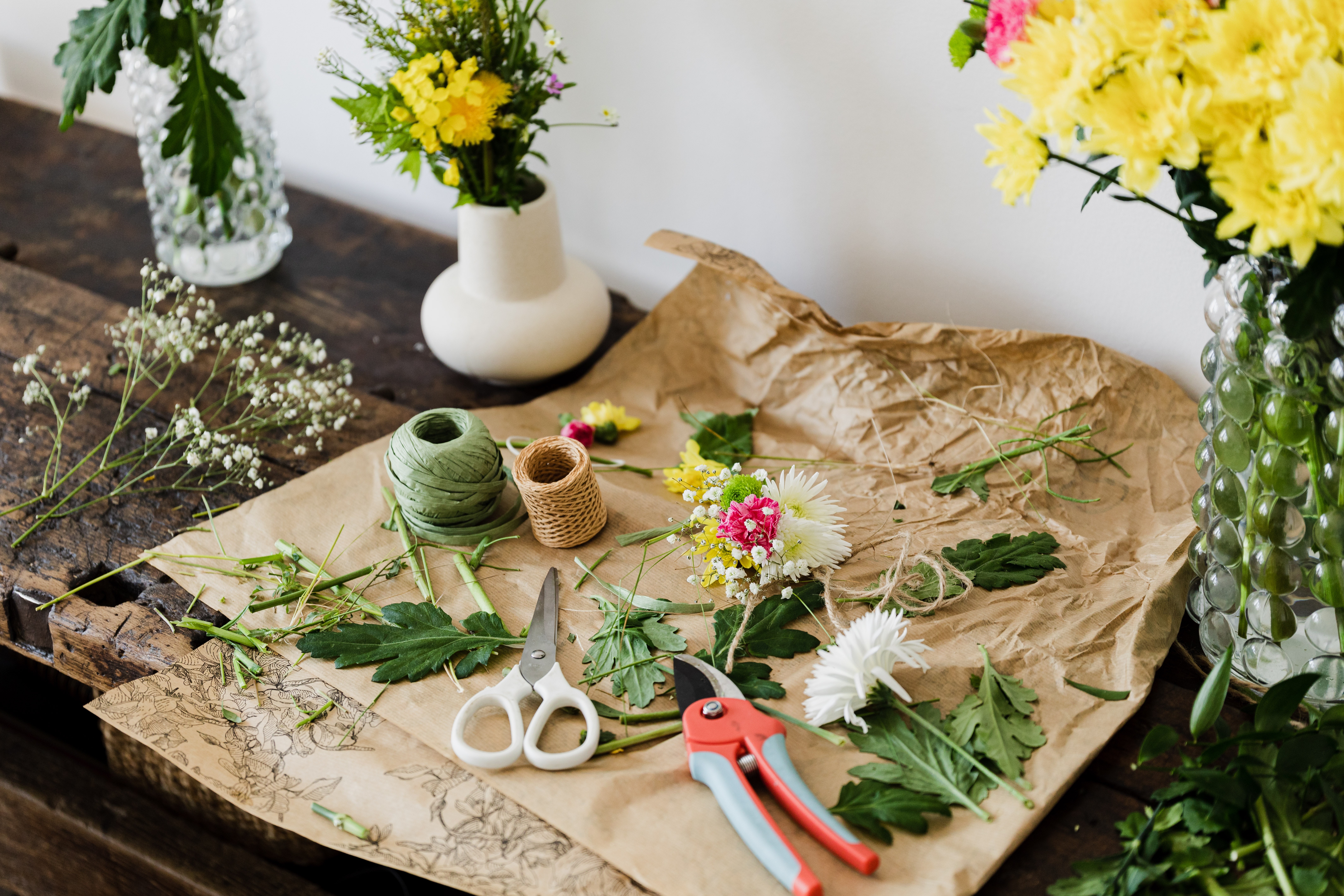We bring you a quick but compelling guide with all the knowledge you need to create a beautiful, sustainable and easy-to-maintain cut flower garden.
Prepare the Site For Your Cut Flower Garden
The first thing you need to do is select a proper space for your garden, even if you are planning to cut the flowers continuously a solid and well-prepared based of soil will provide healthy, beautiful blooms. Even if you are a casual cut flower, soil with rich organic matter helps with water retention and drainage. Built-up several inches of compost or leaf mould within organic fertilizer to the soil before planting your cuts, preferably at the start of the growing season. If you are planting your cuts in a garden make sure the place is weed-free as you don’t want your new cuts to die due to lack of nutrients or water.
For those gardeners who are concerned about space, you can always plant your cuttings between vegetables, shrubs or even in pots. Another popular option (especially if you have a balcony) is to look for raised garden beds, which can be made of metal or wood. Select a space that works best with your gardening tools.

Choosing the Right Flowers
Select flowers that bring you joy, and are easy to care for and grow. We also encourage you to select native plants and flowers, as they support your local wildlife, are better adapted to the weather and have developed their own defence system against pests. In addition, you need to think about the colours and sizes that best match your home decor or that are adequate for your future bouquets.
If your home is colourful and vibrant, select flowers that enhance the beauty of your space and are easy to match your style. Flowers like cosmos, zinnias, dahlias, and sunflowers are great examples and have those characteristics. If you're looking for soft pastel colours for a more romantic bouquet, look to lavender, echinacea, tulips, yarrow, and roses. These flowers will give your bouquet a softer feel. Regardless of what you select, flowers in a variety of shapes, colours and textures are ideal for interesting and charming bouquets.
Strategic Layout is Key
Once you have prepared your soil and selected your desired flowers, it’s time for strategic thinking.
Maintaining, growing and cutting your flowers would be much easier with the proper layout. The general rule is to plan the flowers according to their size, planting the tallest flowers in the back, the medium ones in the middle, and the smallest or shortest ones in the front. By following this layout, you can easily reach your cut flowers without damaging other blooms. For those gardeners with enough space, the traditional yet efficient wide-row approach is ideal, as you can mix and match vegetables and flowers, while still providing easy access.
Another thing to consider is the growing conditions for each of the flowers you selected, as you don't want to overwater or underwater your blooms. The best strategy is to group flowers with the same or similar growing conditions, that way you can meet all their requirements without feeling overwhelmed by their care. Care instructions are usually found on the back of your seeds bag, or you can always talk to your local florist for the best advice. Social media also offers great gardening communities, where experts and newbies alike share tips, tricks, and best practices on growing specific flowers.

Growing Cut Flowers
As the growing season progresses and your flowers start blooming, you might want to keep the following steps in consideration for a healthy and fruitful garden:
1. Some of your flowers may benefit from pinching also known as tipping, which is a pruning method where the plant is pinched back once it is 10 to 12 inches tall. This method is great for young plants as it encourages branching.
2. Pay close attention to your watering habits! Plants usually need water once a week, overwater your plants may let to produce fewer blooms and even drown them. However, be very careful during hot, dry summers, as you need to keep the soil hydrated.
3. For beautiful and strong flowers, feed your plants with organic fertilizer every two weeks. This, within organic compost, should be enough to keep your garden healthy all season long. However, always check the care instructions for the plants you selected, as coreopsis (also known as tickseed) grows best in dry soil.
4. Be sure to cut dead flowers off your plants, as these could invite unwanted pests and/or diseases that would ruin your hard work.
Harvest Your Garden
Now to the fun part, harvesting your garden! The most important step to remember is to keep cutting, as you want to encourage flower production throughout the season. Also, harvesting your plants correctly is a great resource to avoid dead or dying flowers. Otherwise, you'll be wasting valuable nutrients and water on flowers that are just a burden to your garden. We have put together the best tips for a successful harvest:
- Harvest early in the morning or late in the evening to avoid the heat of the day. Flowers should be harvested from well-irrigated, non-water-stressed plants.
- Prepare a clean bucket (or two if you're gathering a large number of blooms) with cold water.
- Make sure your pruning shears or snips are sharp and clean before using them. Gardening gloves are highly recommended.
- Bring your bucket into a cool, shady area to arrange your flowers as soon as it's full or you're finished gathering.
Tip: If your garden is producing more flowers than expected, harvest them all to keep up with the healthy production. You can create extra bouquets for other rooms of your home or share them with friends and family. Flowers always bring joy to people!



